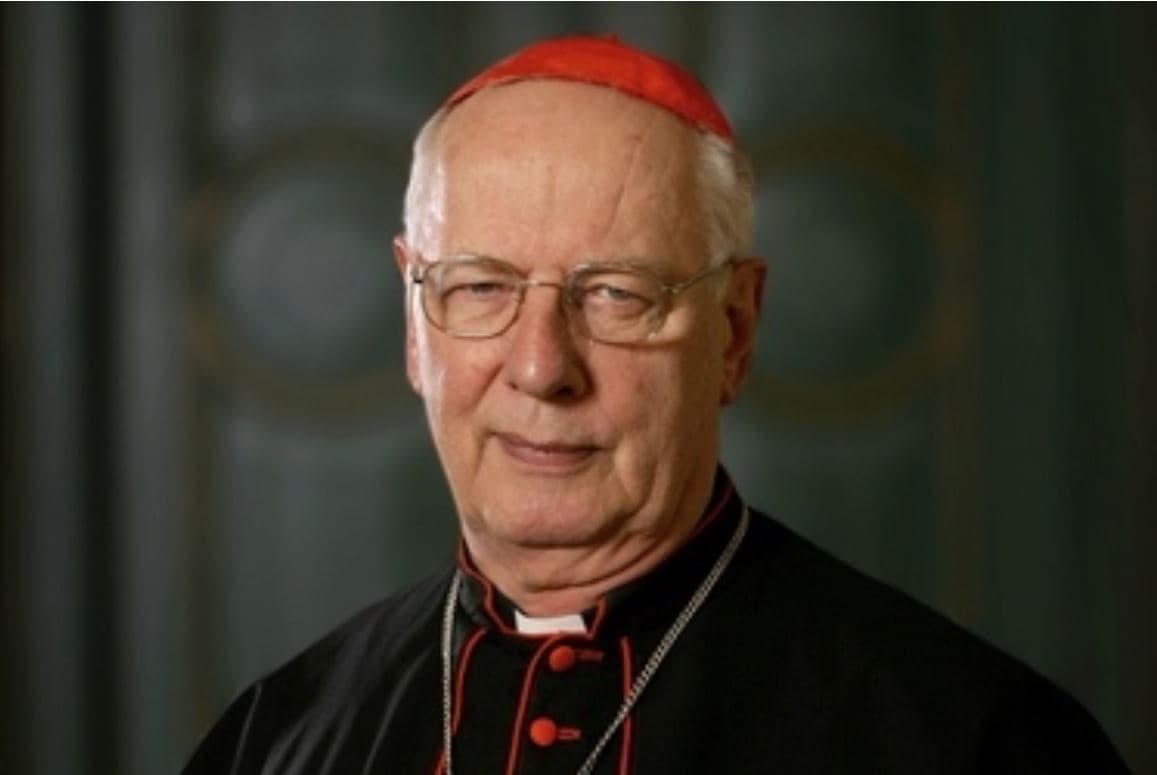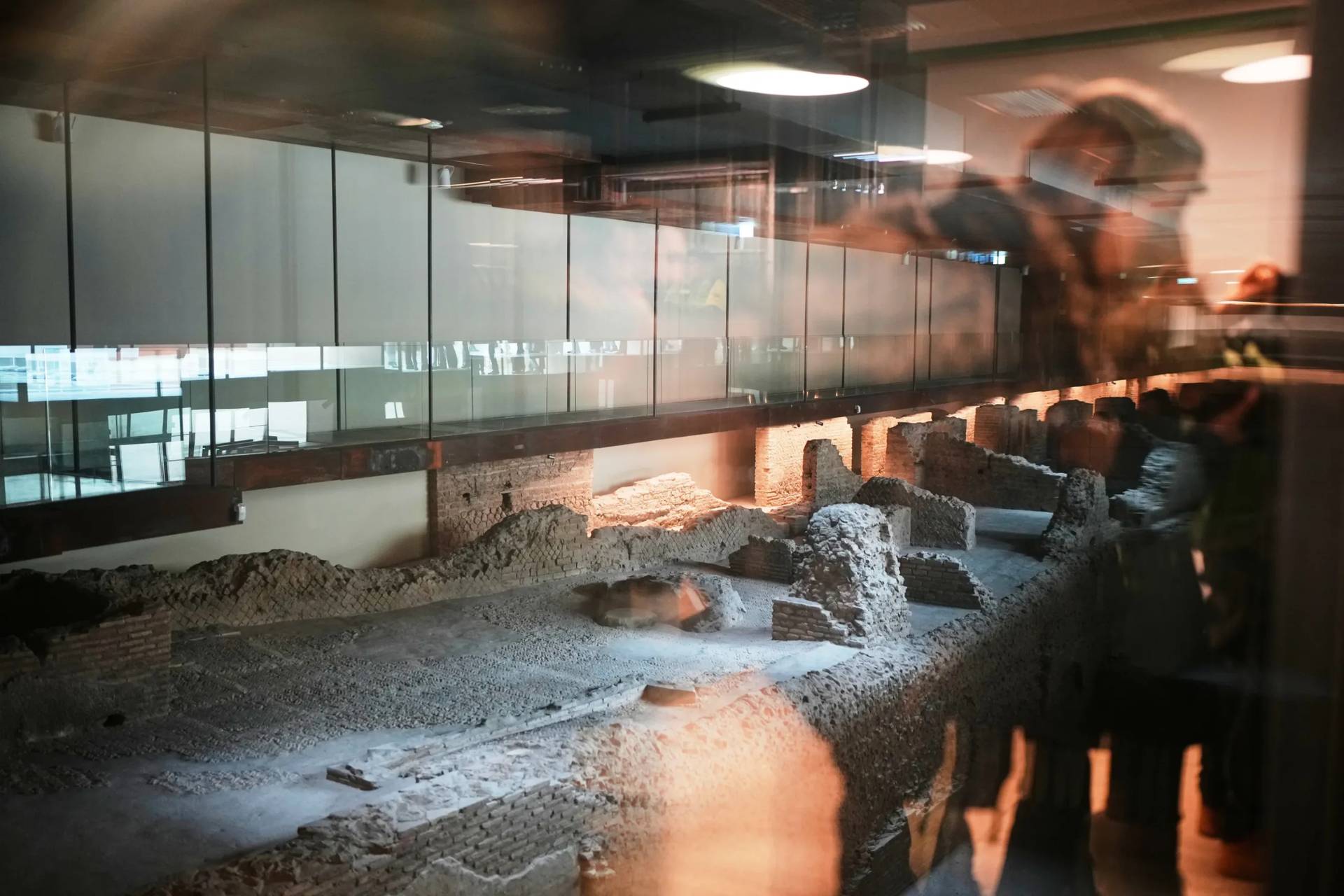When Cardinal Adrianus Simonis was born, he was so frail the doctor told his mother that he wasn’t sure if she’d keep him for long.
Simonis lived, however, and for a long time: The former archbishop of Utrecht died Wednesday at the age of 88. Dutch bishop Gerard de Korte of the southern diocese of Den Bosch, once Simonis’s auxiliary bishop in Utrecht, reportedly administered the last rites to him the day before he died.
When the cardinal was born on November 26, 1931, Catholicism in the Netherlands was still standing proudly. He was one of eleven children in a Catholic family where faith and the Church “were the air you breathed, as it were,” he said during the celebration of his sixtieth anniversary as a priest in 2017.
That culture and the example of some priests made him realize at a young age that he had been called: “As a six-year-old, when asked by an aunt what I wanted to be when I grew up, I spontaneously answered: ‘a priest’.”
And so it was; Simonis was ordained a priest on June 15, 1957 for the then-newly created Diocese of Rotterdam. After several years as a chaplain, he studied in Rome, where he obtained his doctorate in 1966. Once back home he became a chaplain in The Hague.
But just after the Second Vatican Council (1962-1965), the Dutch Catholic Church was in a deeply turbulent phase: The polarization had begun. There was pull of directions between the ‘progressive’ and ‘conservative’ side, a battle that would hold the Dutch Church in its grip for decades.
A new Dutch Catechism (1966) was openly corrected by Rome and the infamous Pastoral Council of Noordwijkerhout (1966-1970) was held: A gathering of the entire Dutch Church where the wildest ideas were put forward.
Simonis took part in it and defended the teachings of the Church. He was therefore branded a conservative for the rest of his life. In an interview with the Dutch Catholic newspaper Katholiek Nieuwsblad he once shrugged and said: “They say ‘conservative’, but I say with Saint Paul: ‘Test all things; hold fast what is good’. In that sense I am conservative.”
In his years in The Hague, he was also the chaplain of a hospital, which he said saved him from the whims of those times: “You heard nothing but slogans about a new Church and a new image of man. The cultural and sexual revolutions of 1968 announced themselves, while I was dealing on a daily basis with sick and dying people, young and old.”
Perhaps thanks to his performance at the Pastoral Council, he was appointed Bishop of Rotterdam, which came as a surprise to many. It was 1970, Simonis has just turned 39 and there was much resistance within the diocese with regards to him being named bishop. Then cardinal of Utrecht, Bernard Alfrink, was also not pleased with the appointment, but Simonis had the support of many ordinary believers.
He was not too keen himself, he once said to Katholiek Nieuwsblad: “I was opposed to it, but when they appealed to me again, I consented. But I was never eager to become a bishop, I would have loved to remain a parish priest.”
It shows what kind of man Simonis was, who once said of himself that he was “not a mystic”: “I am more of a dutiful person, I was brought up that way.”
When Pope John Paul II appointed him to the Archdiocese of Utrecht in 1983, the controversy had not yet blown over: Here, too, a lot of people had very different ideas about who the new archbishop should be. When he took office, there were signs saying ‘Simonis go to Rome.’ In 1985 John Paul II made him a cardinal.
Not only the more progressive side of the Dutch Church was critical of Simonis, however; some on the conservative side complained that he wasn’t vigorous enough and didn’t sanction the Catholics who don’t keep in line with the Church’s teachings.
“There were people who wanted me to throw out priests who didn’t follow the rules,” he said to Katholiek Nieuwsblad in 2001. “But as a bishop you are a shepherd who needs to unite people. It’s about convincing people in a prudent way, because coercion is not the way. And you have to give people time to change, because that is a process.”
Simonis wanted to keep talking to Catholics on all sides.
Public perception of the cardinal would change over the years, perhaps also due to a number of more personal media appearances that highlighted his conviviality. Moreover, by the time he took part in the 2005 conclave, the polarization in the Netherlands had slowly died out. At the time of his retirement in 2007, Simonis was seen as a wise grandfather rather than the dogmatic extremist that people had been taking him for.
However, he made negative headlines once more when, in 2010, he was asked on television about the abuse scandals in the Netherlands and subsequently quoted the infamous statement Wir haben es nicht gewusst (‘We didn’t know’ in German), the stereotypical defense said to have been used by Germans about Nazi atrocities during the Second World War, especially the Holocaust. Simonis would later apologize for his answer.
After his retirement, the cardinal moved to the Focolare community in the southern part of the Netherlands, where he was interviewed again by Katholiek Nieuwsblad in 2018. The conversation turned slightly melancholic when he referred to the hundreds of thousands of children he had confirmed over the years. Where, he sighed, had they all gone? Had he worked hard enough, and had he demonstrated holiness enough to his people? He doubted it. He was not aware that one of those numerous children was interviewing him.
At the same time, that interview was a demonstration of his great faith and a great confidence in God’s mercy. He once said about his unrelenting work regime that he could always rest in eternity. May that rest be given to him now.
This news article was translated for Crux by Susanne Kurstjens-van den Berk.















